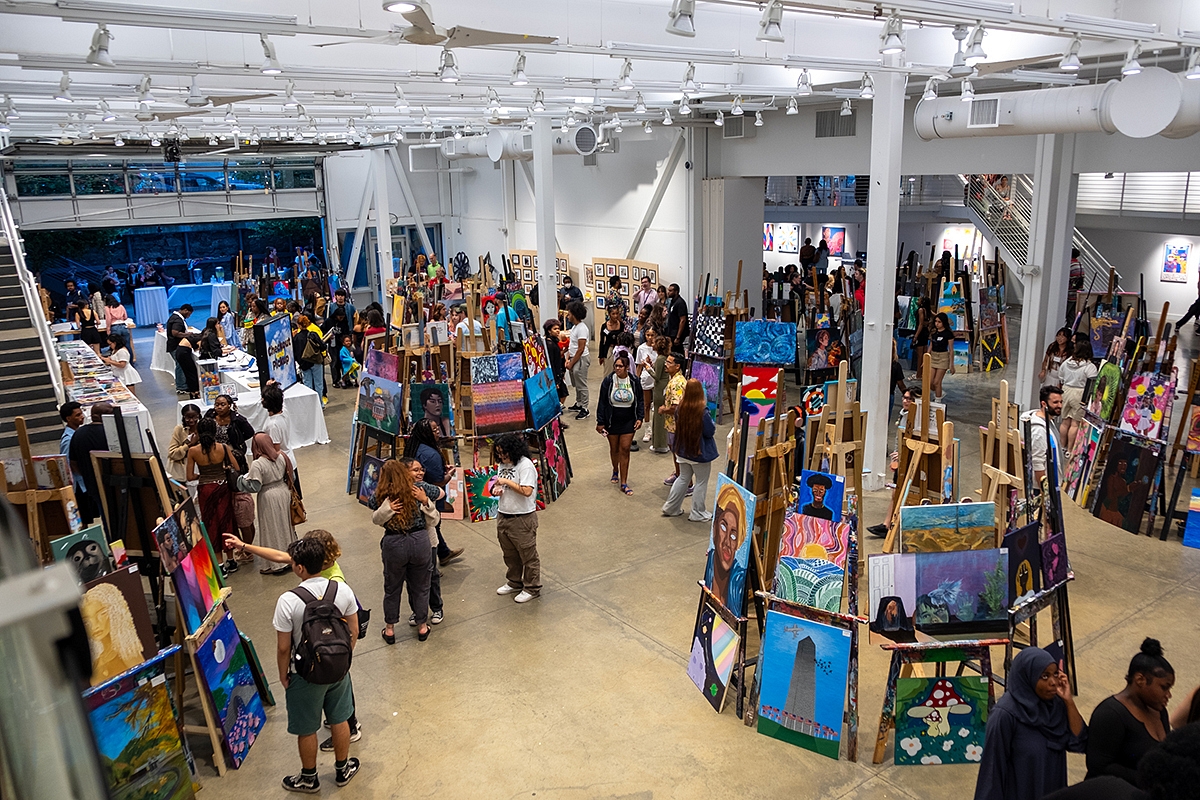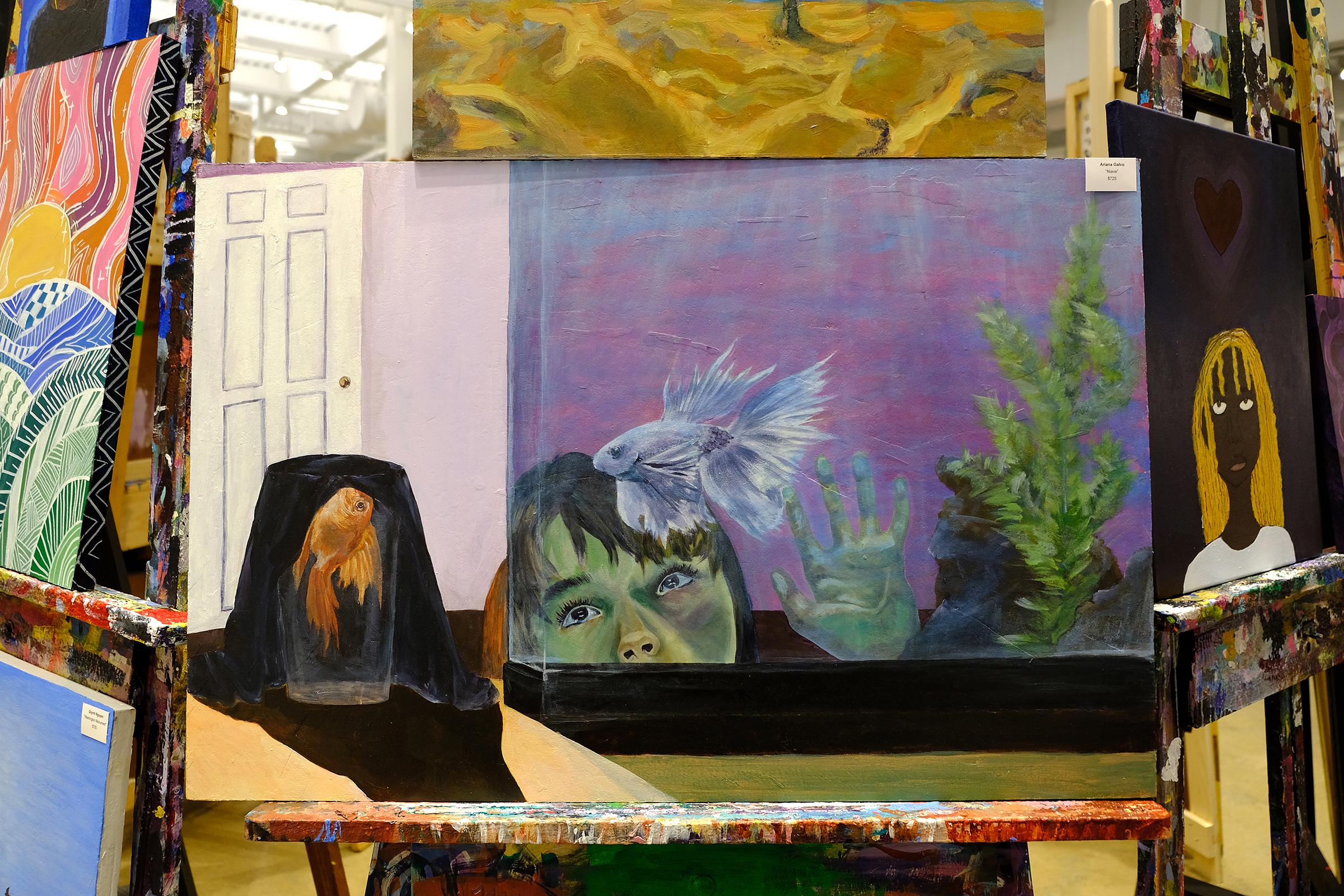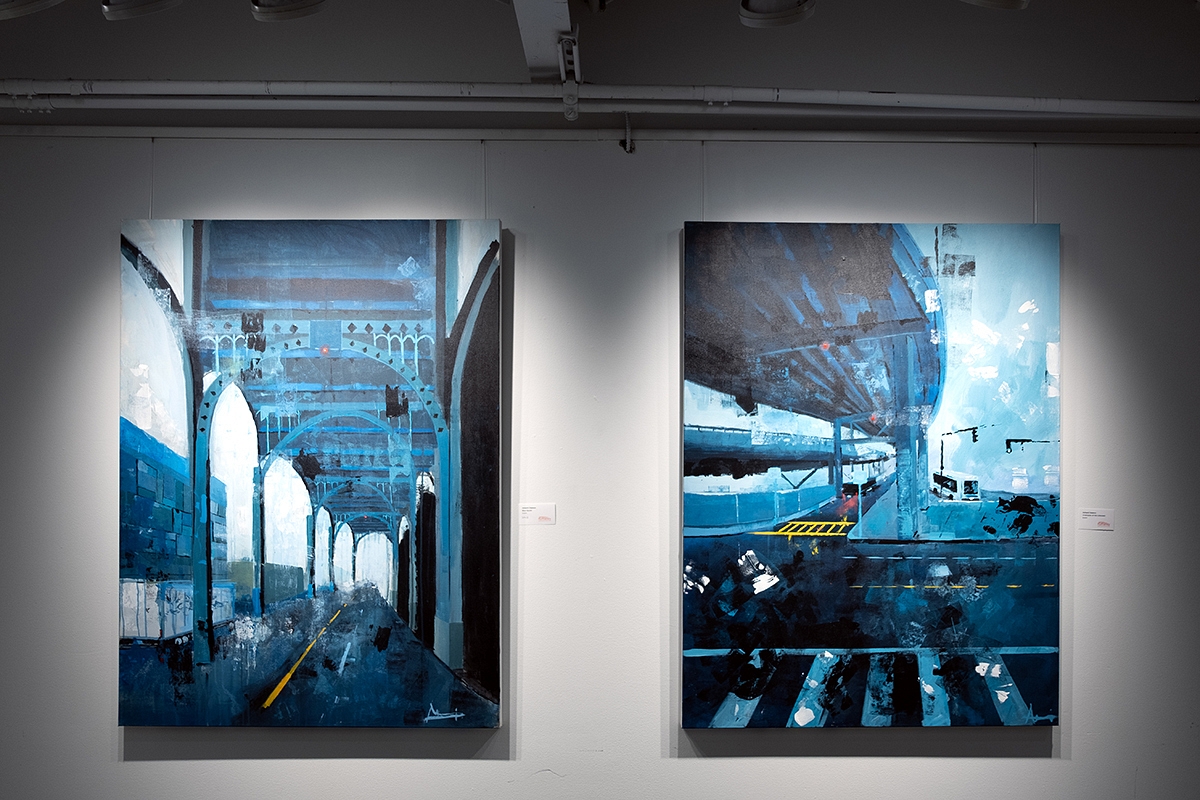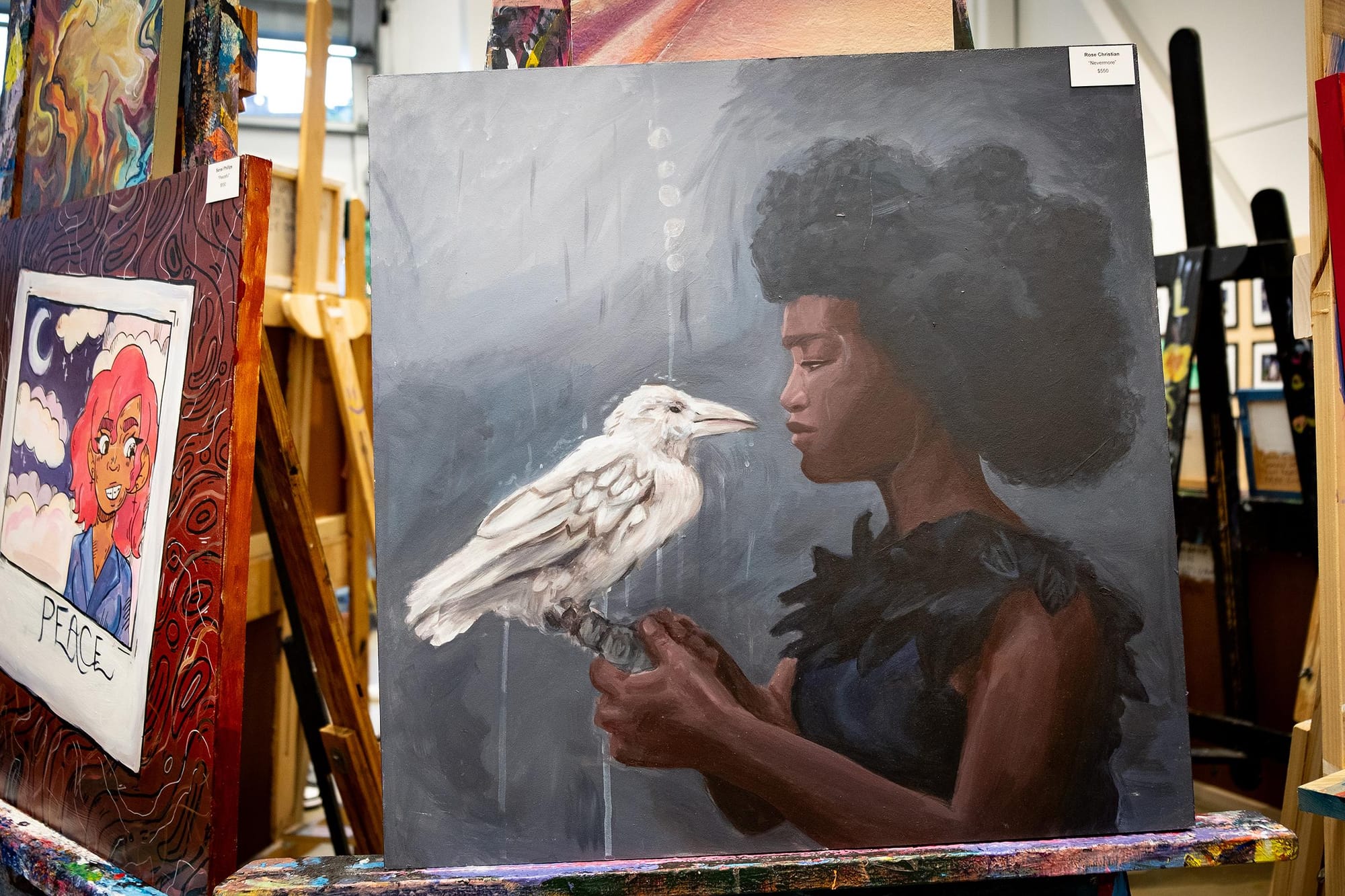Teen artist Ashanti Dejesus’s paintings hung on the wall at the Artists For Humanity’s Big Summa’ Show — two moody-blue paintings of underpasses, their details sponged away to abstraction but their rainy tone familiar to any city dweller. Next to both, little cards on the wall marked their price as $1,600 each and, beneath that, hand-scrawled, all-caps notes that read “SOLD.”
“Oh, these kids are for real,” I thought.

The Big Summa’ Show — which took place last Thursday at the Artists For Humanity Epicenter at 100 W. 2nd St. — showcases the teen artists of Artists For Humanity and was as energetic as any good art show should be. Teens skated on the stairs outside. Music blasted from a speaker somewhere in the center of the floor. People shrieked and hugged and greeted each other. A tiny dog wandered through the gallery off-leash. Professionals with cameras wandered around taking event photos. Or wait, the professionals were the teens?
Downstairs, easels formed giant circles loaded with colorful artwork, displaying everything from surreal abstracts to scenes of Boston life to anime references. Photographs lined the back wall, and tables were set up with vendors selling jewelry, wooden boxes, and travel posters. “Mini art” could be purchased from a toy vending machine for a suggested donation of $25. While some canvases didn’t have price tags or names that I could find, it seemed that everything was for sale. With some room for individual variation, the pieces were mostly priced by size. The smallest canvases trended around $250, while medium canvases averaged around $550. The largest were priced at around $750.
Upstairs was filled with printmaking, lithographs, reliefs, etchings, collagraphs — that is to say, so many different types of prints I had to look up what some of them were. A film was being screened on a wall near a board displaying its production schedule, shot list, and character sketches.
Unlike typical gallery shows, the Big Summa’ Show was as packed and diverse in content as its name implies. As styles ranged from landscapes to abstracts to experimental pieces, you could almost picture the teen artist behind them trying on a new approach. The loose curation gave the space a supportive, collaborative feel, which lent itself less to a critique on which pieces felt like capital‑A Art and more to an excited glimpse into what felt like tiny self-portraits of every artist, each piece a small insight into their worlds.

Of course, there were also plenty of pieces that made me do a double-take because of their creativity or execution and think, “oh wait, a teen made that, too?” Rose Christian’s soft and muted painting Nevermore, depicting a young Black girl holding a white bird, felt almost Shakespearean in its drama and poetic resonance. Ariana Galvo’s painting of a young child observing a fish in an aquarium while a seemingly dead fish floated under a black veil in a cup nearby felt like a multi-layered meditation on innocence.
I found myself constantly checking my own expectations throughout the night, but it wasn’t just that the art was selling, which made me rethink what a teen art show could achieve. It was also the confidence, self-assurance, and professionalism of the artists.
Victoria Kutta, age 16, told me that she’s been involved in the Artists For Humanity program for three years, and beamed while showing me her digital double-exposures of downtown Boston hanging on the walls. She explained that her favorite thing about photography was that it combines technical skill with creativity, allowing you to play within the rules and also push beyond them.
This technical competence was also present in an area of the gallery showcasing the Boston Cyberarts Summer Unity / AR Program, a five-week program in which students experience the game development process and learn programming. On the wall were photos students took of monuments they found in Boston, which, when you downloaded an app, could be augmented with AR so that they were overlaid with art pieces to redefine the monuments for the present day.
I played a shooter game called Worm Invasion, which popped hand-drawn graphics up on my screen as I promptly lost, and sampled several apps on computers propped up on pedestals, including an AI-powered writing assistant app. I also saw a game near me that seemed to be a version of Hangman, but couldn’t quite get close enough to tell because there was a group of teens crowded around it, shouting answers to each other as they played.

There are 337 teens involved with the program, as well as 20 to 30 working artists who serve as young adult mentors. The teens — 87 percent of whom are from low- or very low-income families — work year-round, 25 hours a week, and get paid minimum wage plus a 50 percent commission on all of their art sold.
The program is set up to supplement and provide an alternative system to what teens are usually presented with in public schools. The teens here are treated as adults. Their mentors are colleagues; in fact, 78 percent of the artist mentors are alumni. Jason Talbot, managing director of programs, told me he has been involved with the program since he was 13 years old, and spoke about how fundamental it is for young people to explore what they’re passionate about and see models for how their passion can evolve into a sustainable career.
The program, which boasts a 100 percent high school graduation rate among its seniors, also focuses on upward mobility and gives academic support to its teens. It offers one-on-one tutoring, college readiness planning and advising, alumni networking support, and gives students the chance to work on real-life client projects.
As Executive Director Anna Yu explained, the teens can not only learn about the arts, but also gain real-life experiences. Through building a network with their peers, learning to speak about their work, and experiencing their own financial management for the first time, teens build skills that lead to success no matter what they do.
I left feeling like I had barely scratched the surface of everything that Artists For Humanity does and the impact that it has. But I had a clear impression of the empowering nature of its community and the high standards of respect and professionalism the program sets for its students. I wish I had a bigger personal art budget, because this is one show I would have been very happy to support.
Normally, the most I hope for a teen art show is that it might remind me of why I fell in love with art in the first place — for the pure joy of making art without expectations, the freedom of endless experimentation, and the joyful feeling of creating art without consequence. Looking around the Big Summa’ Show, however, I realized that Artists For Humanity has managed to create a space where high expectations and joy co-exist, experimentation is guided by expertise, and art absolutely has consequence.






